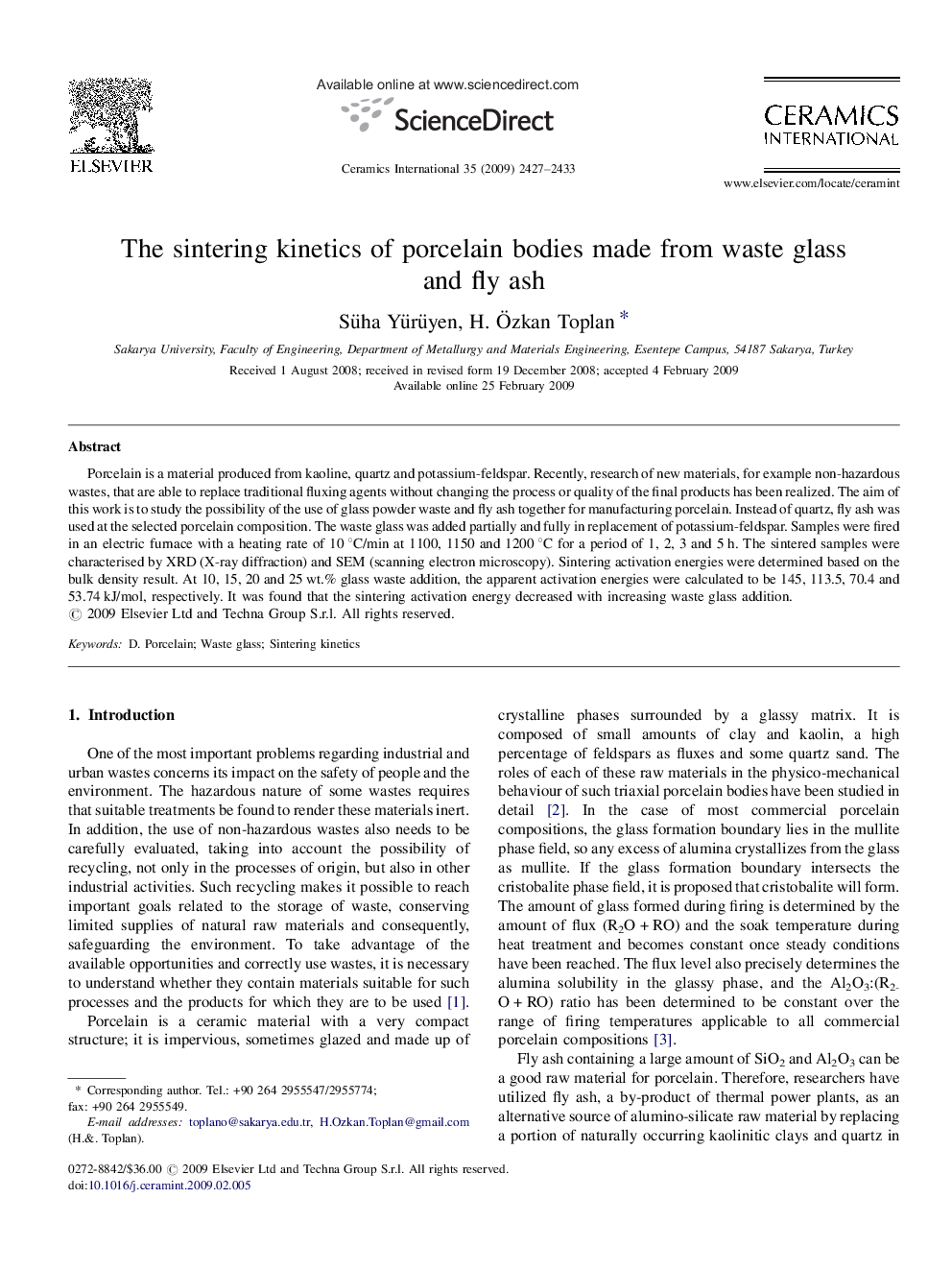| Article ID | Journal | Published Year | Pages | File Type |
|---|---|---|---|---|
| 1465243 | Ceramics International | 2009 | 7 Pages |
Porcelain is a material produced from kaoline, quartz and potassium-feldspar. Recently, research of new materials, for example non-hazardous wastes, that are able to replace traditional fluxing agents without changing the process or quality of the final products has been realized. The aim of this work is to study the possibility of the use of glass powder waste and fly ash together for manufacturing porcelain. Instead of quartz, fly ash was used at the selected porcelain composition. The waste glass was added partially and fully in replacement of potassium-feldspar. Samples were fired in an electric furnace with a heating rate of 10 °C/min at 1100, 1150 and 1200 °C for a period of 1, 2, 3 and 5 h. The sintered samples were characterised by XRD (X-ray diffraction) and SEM (scanning electron microscopy). Sintering activation energies were determined based on the bulk density result. At 10, 15, 20 and 25 wt.% glass waste addition, the apparent activation energies were calculated to be 145, 113.5, 70.4 and 53.74 kJ/mol, respectively. It was found that the sintering activation energy decreased with increasing waste glass addition.
